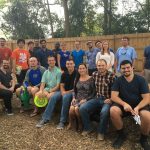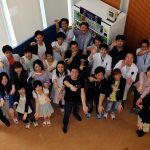Our team works with collaborators across the university, including biologists, clinicians, veterinarians, and other engineers. Ongoing projects include applications to stem cell biology, pancreatic cancer, and tumor modeling. Explore our projects below:
Measurement of Contractility-induced Residual Stress for Tissue Engineering – NSF Mechanics of Materials & Structures – 2018-2021
Tissue engineering and regenerative medicine hold the promise of rebuilding organs for transplants and reconstructing diseased tissues. A critical challenge for tissue engineering is the ability to design them to mimic mechanical properties of the tissues they replace. Biological cells are not passive but actively alter their surroundings by reaching out, grabbing onto the protein-based scaffold around them and contracting to cause internal stresses. These cell-generated stresses are an important consideration in human health and disease because they alter mechanical and failure behavior of tissues. This study will use an integrated experimental and modeling approach to measure the effect of living cells embedded in engineered tissues as they contract and continuously alter mechanical behavior. Stress fields in these tissues will be measured with micro-Raman spectroscopy at one-micron resolution, and Raman spectroscopy data will be used to develop computational bio-composite models that quantify the contributions of cell contraction to the constitutive response of engineered tissues. This approach of utilizing spectroscopy on engineered tissue surrogates is novel and provides a potentially transformative means for tracking stresses around cells. With Malisa Sarntinoranont (PI, MAE) and Ghatu Subhash (MAE)
Mechanisms and Treatment of Cardiac and Skeletal Muscular Dysfunction in Barth Syndrome – NIH NHLBI Research Project Grant (R01) – 2018-2021
Barth syndrome (BTHS) is a rare, frequently fatal, mitochondrial disease caused by recessive loss-of-function mutations in the gene TAZ, which encodes tafazzin. Mutations in tafazzin affect mitochondrial energy production that results in cardioskeletal myopathy, but there are considerable differences in disease progression and clinical presentation among patients. These differential clinical outcomes combined with the high variability in the location and severity of TAZ mutations suggest that tafazzin possesses uncharacterized functions that may involve interactions with unidentified proteins to influence BTHS and common heart failure presentation as well. In order to define these novel mechanisms, we propose to study induced pluripotent stem cells (iPSCs) from human BTHS patients that have been differentiated into cardiomyocytes (CMs) and skeletal myotubes (SkMs). The in vitro work will be complemented by in vivo BTHS mouse model analyses and human data from an ongoing clinical study. In combination, these models will provide valuable platforms for defining disease mechanisms and testing pre-clinical gene therapy. With Christy Pacak (PI, Pediatrics) and Nao Terada (Pathology)
Experimental and Computational Models of Desmoplastic Tumors – New Collaboration!
In many cancers – including pancreatic, breast, and prostate – tumors contain dense scar-like tissue that surrounds cancer cells. In pancreatic cancer, for example, this “desmoplastic” dense tissue serves as a repository for tumor-promoting growth factors, provides a physical barrier to drug delivery, and contains tumor-associated stromal cells (TAS) that communicate with cancer cells. Animal models of pancreatic cancer do not replicate these phenomena accurately and neither do cells in a petri dish. To provide a new model system to study therapeutic compounds for pancreatic cancer, we have created an Engineered Tumor Model (ETM) that incorporates both TAS and cancer cells, isolated from human patients, into a 3D gel. Our engineered experimental and computational models will accelerate translation of compounds to the clinic, and their simple, elegant design will be translatable to other forms of cancer and additional compounds. With Greg Hudalla (BME), Malisa Sarntinoranont (MAE), and Song Han (Surgery)










